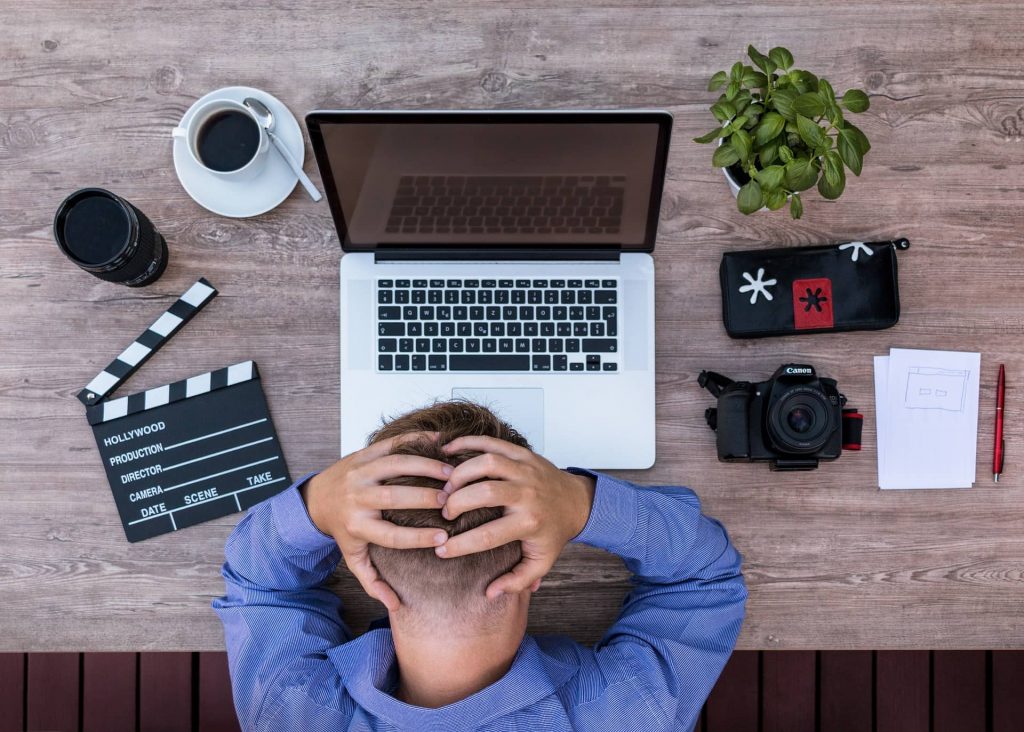Written by Sadaf Qadir

Considered one of the most common mental health disorders, anxiety affects about 18% of the U.S. population [1]. The Diagnostic and Statistical Manual of Mental Disorders, Fifth Edition (DSM-V) characterizes anxiety disorders as those that involve feeling excessive fear and anxiety, where fear is defined as responding to real or perceived threats and anxiety is defined as anticipation of future threats [2]. Different types of anxiety such as generalized anxiety disorder, social anxiety, panic disorders, and phobias are all included in this category [2]. General symptoms of anxiety include excessive worrying, restlessness, difficulty concentrating, irritability, muscle tension, indecisiveness, fatigue, headaches, and sleeping problems [4, 5]. While anxiety can affect anyone at any age, women are 60% more likely to experience anxiety than men, and people from ages 30-45 make up 35% of anxiety cases [1].
Although anxiety is very common and highly treatable, only about one third of people experiencing symptoms of anxiety actually seek treatment [3]. Since the symptoms of anxiety are broad, there are a number of different treatments for anxiety that can be catered to an individual’s needs. Current treatments include psychotherapy and/or medication. Psychotherapy involves using talk therapies and working through problems with a psychologist [6]. One common type of psychotherapy is cognitive-behavioral therapy. In cognitive-behavioral therapy, patients talk through their problems and also are taught how to think and react to situations of stress [4]. Other psychotherapy techniques include support groups, meditation, and stress management techniques [4]. Sometimes medication may be prescribed alone or along with psychotherapy techniques. Current medications given for anxiety include anti-anxiety medications such as benzodiazepines, antidepressants, and beta-blockers [4].
While these methods are the current and most utilized diagnostic standards, research shows the effectiveness of both traditional and newer methods of treating anxiety. For example, yoga has been shown to aid in stress management [8]. Studies on deep breathing exercises have shown to improve test anxiety and nervousness [9]. Computer therapy has been found to be as effective through group therapy for dealing with anxiety in college-aged students [7]. The directions these studies are taking in integrating current therapy techniques and traditional meditation show the benefits of a holistic approach on treating anxiety.
While many stress and anxiety management techniques can be self-implemented, it is still important to seek professional help. Professionals allow you to keep track of your progress and work with you to determine the best anxiety management strategies for your lifestyle. Understanding and being aware of anxiety disorders and their treatments allows us to recognize the symptoms faster, get treated faster, and get back on track faster.
References:
1. Any Anxiety Disorder Among Adults. National Institutes of Health
2. Anxiety Disorders. Anxiety Disorders | Diagnostic and Statistical Manual of Mental Disorders
3.Facts & Statistics. Anxiety and Depression Association of America, ADAA
4. Anxiety Disorders. National Institutes of Health
5. Generalized anxiety disorder Symptoms. Mayo Clinic
6. Understanding Psychotherapy. American Psychological Association
7. Buglione SA, Devito AJ, Mulloy JM. 1990. Traditional group therapy and computer-administered treatment for test anxiety. Anxiety Research 3: 33–9.
8. Gothe NP, Keswani RK, Mcauley E. 2016. Yoga practice improves executive function by attenuating stress levels. Biological Psychology 121: 109–16.
9. Paul G, Elam B, Verhulst SJ. 2007. A Longitudinal Study of Students’ Perceptions of Using Deep Breathing Meditation to Reduce Testing Stresses. Teaching and Learning in Medicine 19: 287–92.